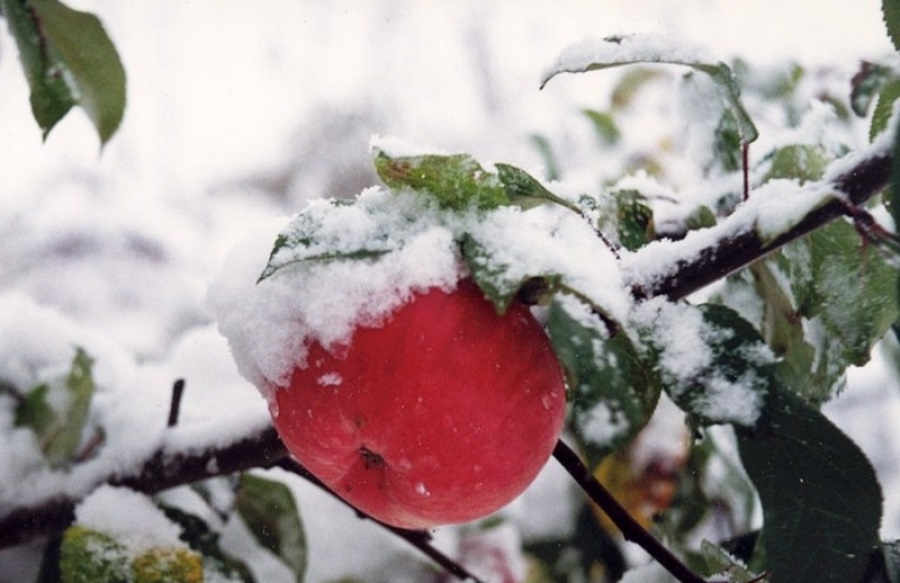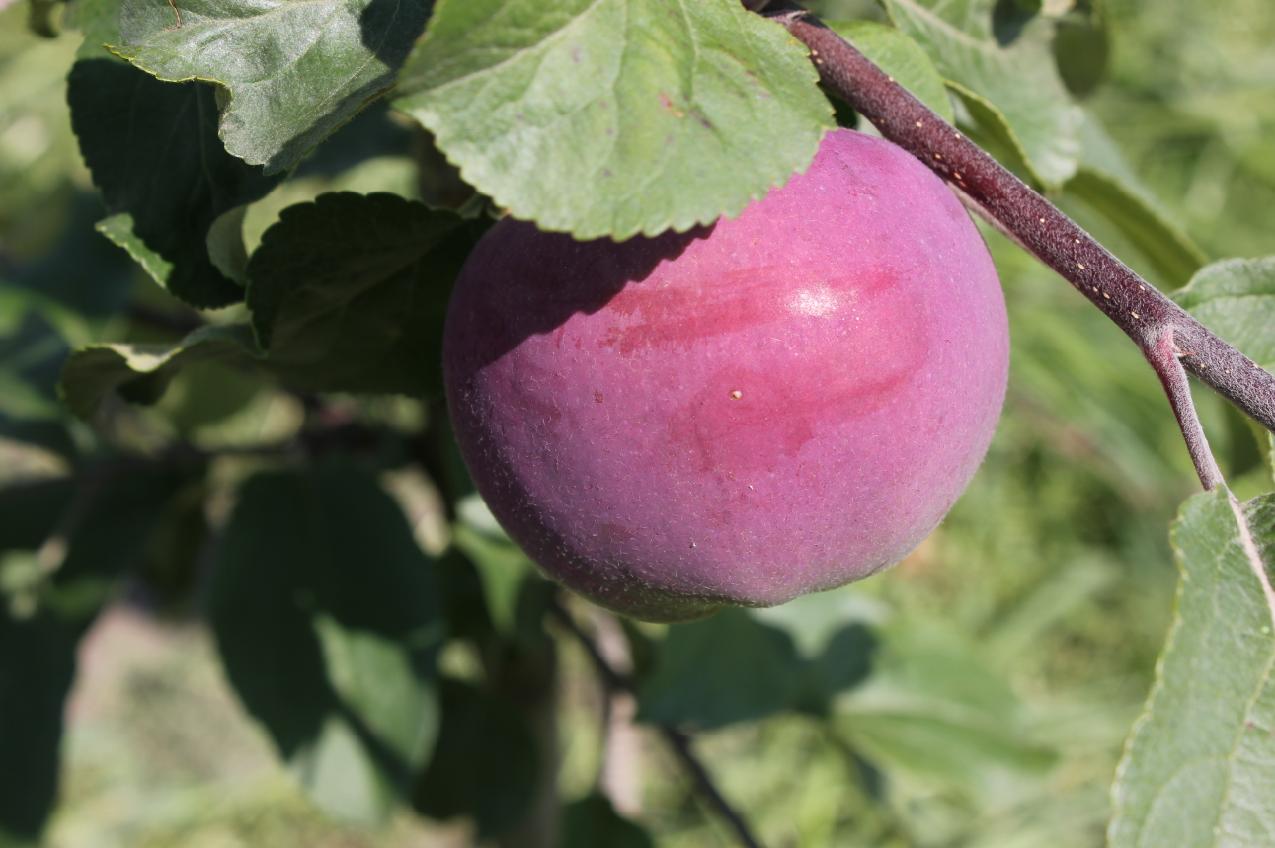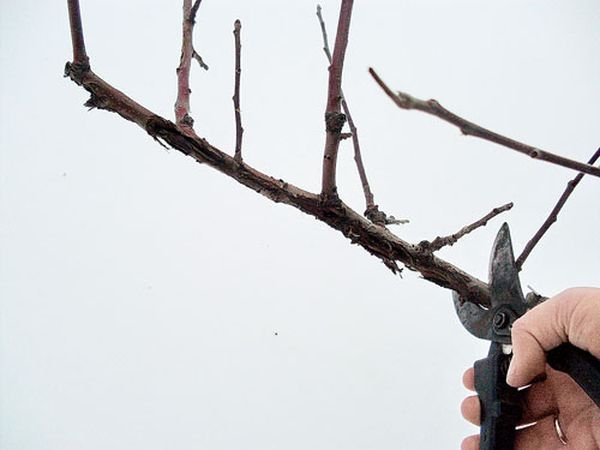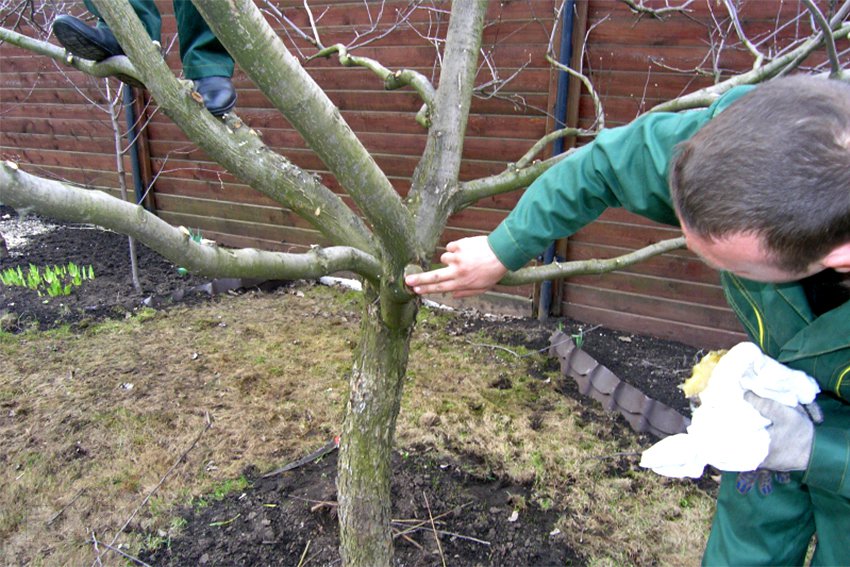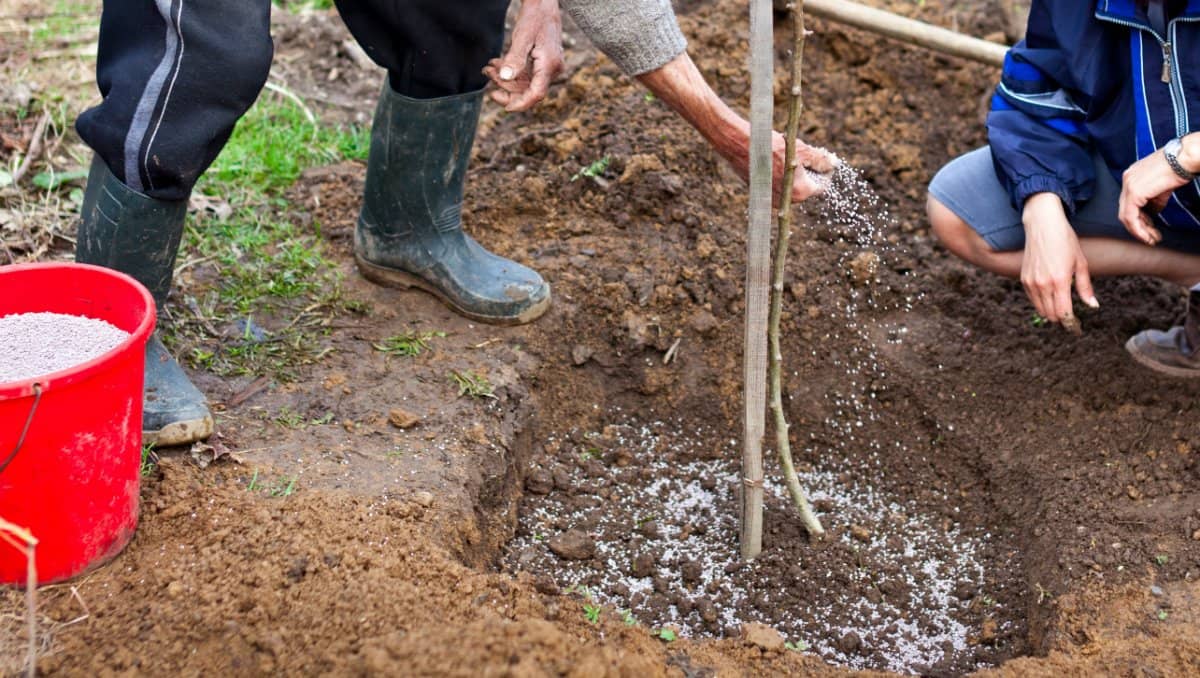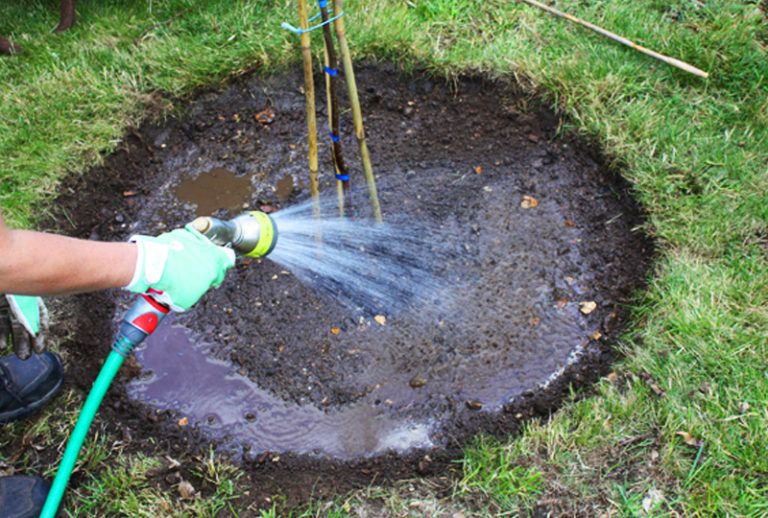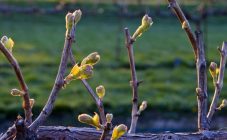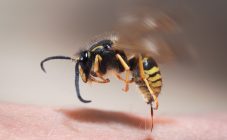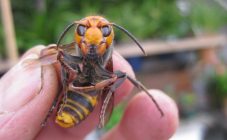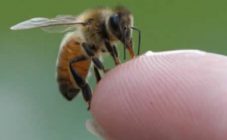Content:
Many shrubs and fruit trees grow on almost every household plot, among which an apple tree is often found. Gardeners appreciate it for the unsurpassed taste of the fruit, which is suitable both for fresh consumption and for processing into juices, jams, marmalades, etc. But even an experienced owner can make a mistake in preparing for winter. In this case, the question arises - if the apple tree is frozen, what to do?
The apple tree is frozen, is it possible to save?
Unfortunately, not only young, but even old trees can suffer from severe frosts. This is especially true for thermophilic varieties: Idared, Antonovka, White filling, etc. Seedlings can freeze completely, and if the soil freezes, the root dies. The following are the necessary actions for rescue at different stages of frost damage:
- Symptoms: by the end of spring, not a single leaf had appeared on the tree. The apple tree does not wake up from winter sleep and does not show signs of life. The bark has shriveled, turned gray and withered. Moisture with a putrid odor has formed under the bark. Brown spots are visible on the cut of the branches and root system. There is no overgrowth.
Conclusion: this situation speaks of complete tissue necrosis. The apple tree is frozen, what to do in this case is absolutely obvious - to grub up and plant new trees.
- Symptoms: in the ground part of the tree, similar to the first case, but the root is alive. Shoots appear in April or May. This means that only the upper part of the plant is frozen. There is a chance that the crown will recover, but subject to the appearance of kidneys. If there are no buds, but there are growths, the tree is only suitable for grafting.
Conclusions: first of all, you should remove all frozen parts of the crown and cut off dead branches. A new crown should be formed from the processes. In such cases, you can shape the tree into a bush or bowl. But many gardeners choose to replace the tree entirely.
- Symptoms: the buds on the tree bloom at the specified time, buds are set and flowers bloom. But the leaves of a small size become covered with yellow spots, and over time they dry up completely and crumble. The sections show no traces of freezing - no stains or any other traces. But the roots are brown, young shoots do not appear.
Conclusions. The tree cannot be saved. The upper part did not suffer from frost, but the root system died. A possible reason for this was strong freezing of the soil or flooding with melt water.
- Symptoms: the root is not affected by frost, as can be judged by the emerging strong growth. At the same time, the main crown suffered quite significantly, which affects the development: the leaf dries up or grows small, the branches have a greenish tint on the cut. Brown spots are the main symptom that frost has managed to freeze the tree.
Conclusions: Symptoms will be observed for several seasons, but the tree can be saved. The main thing is to assess the need for this variety in the garden. The tree that can be replaced is replaced, and the valuable variety is treated by cutting off the damaged areas. The tree is pruned down to strong stamped shoots and a new crown is formed.
- Symptoms: The main symptom of moderate frostbite is poor kidney development. Some of them may not wake up at all. Young branches are withered, brown when cut. At the same time, strong spinning tops appear - this means that the tree can be saved.
Conclusions: all damaged areas need to be cut off, and the crown must be restored due to the formed bud shoots.
If apple fruit buds do not awaken, but in the absence of other symptoms, one can rejoice - only the apple harvest this season has suffered. If the tree is well looked after and fed, then by the next year it will yield a harvest.
Pruning frozen trees
Tree pruning depends entirely on age and level of frostbite. The main principle here is to help the tree cope with the damage it has received and not harm it. Therefore, you can give some general tips for pruning and forming a new crown:
- Provided that a tree that was planted in a permanent place less than four years ago is completely frozen to the snow cover, it is completely cut to the level of the remaining intact wood. A new crown is formed from the root growth.
- If freezing occurred above the place where the cultivar was grafted, the newly appeared branches will refer specifically to it. In this case, all unnecessary is cut off. You can wait until next season before pruning.
- Provided that the young tree is not very frozen, all new shoots coming from the stock and from the root should be removed. This is done so that the tree does not waste energy on the formation of shoots that it does not need. On the contrary, it should direct nutrients to the growth of the remaining branches.
- Mature trees, slightly affected by winter frosts, should be cut in exactly the same way as others. However, the trim level should not be too intense. Better to cut more for the coming season.
- Trees severely affected by frost should not be cut at all. You need to wait for the buds to bloom. This is the only way to determine the level of frost damage to the branches and draw the correct conclusions about which branches should remain and which should be removed. Quite often, only the tips and crown of the head are affected, and the lower branches remain untouched by frost. In this case, you need to cut the damaged parts from healthy wood to the point where new shoots have appeared.
Caring for a frost-affected seedling
Young trees that have not yet had time to get stronger can most often freeze under winter frosts. So, the apple tree is frozen, what should I do?
If the tree is not badly damaged, you can make preventive pruning of the damaged areas and strengthen its care. During this period, watering should be intensified so that the affected tree does not suffer from a lack of moisture. When flower ovaries appear, remove them. Top dressing and regular mulching are carried out.
Everything is much more complicated when the seedling is completely frozen, but the root remains intact. In this case, the attempt to save him will not be crowned with success, since the tree has not yet been formed. Better to replace it with a new one. But if the variety is valuable enough, you need to make a complete pruning to the surviving wood, and form a new crown from the resulting growth.
Of all the shoots that appear, one should choose the strongest, which will become the basis for the future crown. The development of other shoots must be restrained by shortening. For the next season, they are cut out altogether.Given a strong root system, you can count on the formation of a new crown several times faster than when planting a new seedling. That is, going this way is the right decision. The formed crown must be watered abundantly, and the tree must be fed with useful substances.
The top of a columnar apple tree froze: ways to solve the problem
This apple variety is quite popular among gardeners. But they can also suffer from frost, their top is especially at risk. So, the top of the columnar apple tree froze - what to do in this case?
First of all, don't panic. When it freezes on the top of the tree, branching begins. Thus, not one trunk is formed, but two or three. Inexperienced gardeners do not know what to do and often destroy the tree. But, in fact, nothing terrible happened. An experienced gardener may even benefit from a similar situation: if all three trunks are developing well, then the fruit will be on each of them.
If you do not want to leave several trunks, you should determine which one is the most powerful, and cut additional ones. A few leaves should remain on the remaining shoot. With the onset of warmth, the kidneys on it will awaken.
If the tip has died from frost, it should be cut off with a pruner to the living part of the shoot. The rest of the shoot will become an extension of the trunk.
In order to prevent the branches of a columnar apple tree from freezing, you need to take care of the reliable protection of young trees from frost. They are carefully covered for the entire cold period of the year, thus protecting them from severe frosts. Such measures will help protect the plant from both the cold and pests, which include hares, mice and other rodents.
Care tips from experienced gardeners
First of all, you need to protect the trunk and the skeleton of trees from frost. If there are signs of frost damage to the plant, then it is these parts that are examined most carefully. You can determine the degree of damage by cutting off a piece of wood from the trunk with a sharp knife. In this case, you need to look at its color:
- dark brown - the tree is dead;
- light brown - medium damage;
- greenish color - slight damage.
It is necessary to start treating the tree immediately with the retreat of frost. As soon as the snow has melted, you should carry out the first feeding with nitrogen fertilizers. The dosage is taken more than with normal feeding. The next step is whitewashing and spraying with lime solution. This step will reduce the heating of the bark. Do not forget about loosening and mulching.
Water frostbite trees from time to time should be warm water. Moreover, this procedure is carried out until the establishment of hot summer weather. From mid-July, watering is carried out with water at normal temperature.
There is no need to rush with pruning. It will be possible to clarify the picture with the degree of damage only after the buds undamaged by frost bloom. The tree should not be allowed to bloom.
If the top of the tree has died, you can wait for the autumn growth to appear and form a new crown from it. For this, the strongest shoot is selected, which will become the formative basis. The rest of the growth is cut off. The old crown must be cut to the point of growth of the new formative shoot. Quite often, gardeners practice leaving several trunks and forming a multi-stem tree. If the tree was young and did not hurt, a new crown will be formed in just a few seasons.
When pruning a frozen plant, you need to be very careful, making sure that there are as few wounds as possible on the central conductor and the main branches.Otherwise, the branch above the cuts may die. Sometimes this situation leads to the death of the entire tree.
In the case when such work cannot be avoided, one branch is completely cut off, and a branch of the maximum possible length is left on the other. If possible, postpone serious pruning of frost-damaged trees until the next season.
Places of cuts must be disinfected and abundantly treated with garden varnish. This procedure is mandatory for any trees, but with frozen ones it is carried out as carefully as possible.
Even if all the necessary measures are taken, damaged branches may dry out in the summer. They are cut into a ring. This situation will not in any way affect the recovery of the entire plant, but it is imperative to remove dried branches. Otherwise, the appearance of bark beetles, woodworms and other pests of this kind is possible.
In general, frostbite of an apple tree is a big nuisance even for an experienced gardener, but measures taken in time will minimize the damage. At the same time, it should be remembered that it is better to prevent trouble than to deal with the possible consequences. Therefore, young trees must be carefully prepared for wintering.
